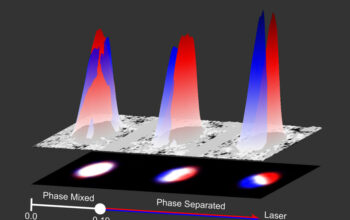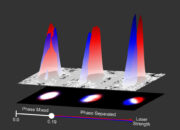Carbon nanotubes (CNTs) stand at the forefront of nanotechnology, exhibiting remarkable properties that herald unprecedented advancements across a myriad of disciplines. Their unique structure, comprising cylindrical arrangements of carbon atoms, endowed with extraordinary mechanical strength, electrical conductivity, and thermal conductivity, engenders transformative potential. This article embarks on a journey through the fascinating world of carbon nanotubes, unraveling their innovative applications and implications.
At the core of understanding carbon nanotubes is recognizing their formation. Synthesized to consist of sheets of graphene rolled into tubular structures, carbon nanotubes come in various configurations—single-walled (SWCNT) and multi-walled (MWCNT). The physics underlying their formation and subsequent properties is inherently linked to the arrangements of carbon atoms and their orbital hybridization. The electron delocalization within these tubes contributes to their outstanding electrical properties, making them candidates for next-generation electronic devices.
The mechanical prowess of carbon nanotubes cannot be overstated. With tensile strengths exceeding that of steel by a factor of hundreds, they demonstrate exceptional resilience and lightweight characteristics. This unique combination has piqued interest in the materials science domain, particularly in applications related to composite materials. Incorporating CNTs into polymers, metals, or ceramics can significantly enhance the mechanical properties of these composites, leading to lighter and stronger materials ideal for aerospace and automotive industries. This innovation presents an opportunity to revolutionize material design, making products not only more efficient but also environmentally sustainable.
Complementing their mechanical properties is the electrical conductivity of carbon nanotubes. While the single-walled variety can exhibit metallic or semiconducting behavior depending on their chirality, multi-walled carbon nanotubes often showcase excellent conductivity due to increased electron mobility. This variability opens avenues for application in nanoscale electronic devices, such as field-effect transistors, capacitors, and sensors. The integration of CNTs in microelectronics could pave the way for faster, more energy-efficient devices, thereby facilitating the electronics industry’s ongoing evolution towards miniaturization and performance enhancement.
Carbon nanotubes also excel in thermal management. Their impressive thermal conductivity, surpassing that of conventional materials, poses exciting prospects for heat dissipation in electronic applications. High-performance thermal interface materials that incorporate CNTs can effectively channel heat away from sensitive components, thereby enhancing reliability and extending the lifespan of electronic devices. This property also exploits CNTs in thermal barrier coatings and heat-resistant materials, leading to innovations in construction and manufacturing sectors.
The biomedical field has emerged as a notable landscape for carbon nanotube application. Their high surface area, coupled with biocompatibility in certain configurations, opens pathways for targeted drug delivery systems. By functionalizing carbon nanotubes, it is feasible to attach therapeutic agents or imaging agents selectively to diseased cells, enhancing treatment efficacy while minimizing side effects. Furthermore, the inherent properties of CNTs facilitate real-time monitoring of physiological processes, potentially revolutionizing diagnostics and personalized medicine.
Despite the myriad of benefits, the journey of carbon nanotubes is not without challenges. The potential toxicity of CNTs has ignited debates regarding their safety, necessitating extensive research to ascertain the implications of chronic exposure. There is an urgent need for regulatory frameworks guiding their use, especially in consumer products. Understanding the environmental and health impacts of carbon nanotubes is imperative to harness their benefits while mitigating risks, urging a balanced approach to their integration into everyday life.
Moreover, the scalability of CNT production and cost considerations remain pressing challenges. Current synthesis methods, including chemical vapor deposition and laser ablation, can be resource-intensive and thus prohibitively expensive for widespread adoption. The future of carbon nanotubes hinges, in part, on developing economically viable production techniques that retain the purity and performance characteristics essential for industrial applications. Innovations in manufacturing processes may significantly influence market accessibility and the proliferation of carbon nanotube technologies.
As we cast a glance toward the future, the potential for carbon nanotubes in textiles emerges as an intriguing frontier. By weaving carbon nanotubes into fabrics, the creation of smart textiles becomes attainable. These textiles could possess extraordinary properties such as self-cleaning capabilities, enhanced durability, and even integrated sensing functions. Such advancements suggest a paradigm shift in textile engineering, blurring the lines between traditional materials and cutting-edge technology.
Ultimately, carbon nanotubes spin a vibrant narrative of innovation, weaving together strands of science, engineering, and practical application. Their unique attributes challenge our conventional perspective on materials and their capabilities, instilling a sense of curiosity about the possibilities that lie ahead. As research and development continue to unravel the complexities of carbon nanotubes, one can only anticipate the vast tapestry of innovations they will inevitably weave within various sectors. The journey of carbon nanotubes is still evolving, but it unmistakably leads toward a horizon filled with promise and potential, urging society to embrace this profound technological renaissance.










